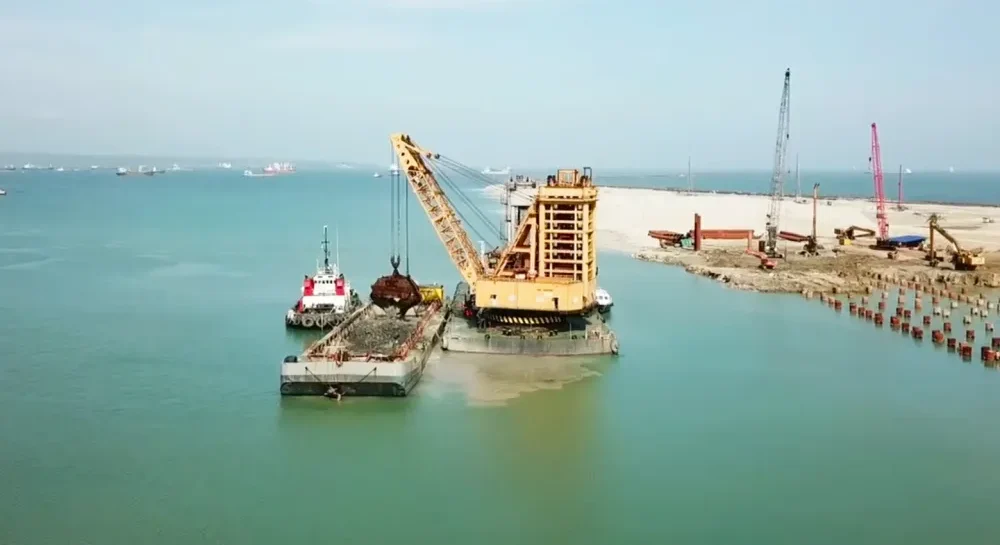Introduction
In regions plagued by persistent flooding, particularly in provinces with significant river deltas, establishing navigational channels through dredging has emerged as a vital strategy. Dredging, the process of removing sediments and debris from the bottom of lakes, rivers, harbors, and other water bodies, can be pivotal in flood management and environmental conservation. This article delves into how dredging contributes to creating and maintaining navigational channels in offshore deltas, thereby addressing flooding and enhancing water management.
The Hydraulic Imperatives of Dredging
Dredging serves multiple hydraulic purposes; primary among them is the enhancement of water flow and the mitigation of flooding. In offshore deltas, sediment deposition often leads to shallow waterways that impede the flow of water into the sea, causing upstream accumulation and flooding. By removing these sediments, dredging deepens and widens channels, ensuring a smoother, more consistent flow of water.
Case Study: The Mississippi River Delta
A practical example of this can be observed in the Mississippi River Delta in the United States. The area is notorious for its sediment-rich waters which deposit large amounts of sediment at the delta. Regular dredging operations have been crucial in maintaining navigability and preventing upstream flooding, particularly during the snow-melt season when large volumes of water descend down the river.
Technical Aspects of Dredging Operations
Types of Dredging Equipment
Dredging operations employ various types of equipment, tailored to specific needs and environments:
- Cutter Suction Dredgers: These are effective in delta environments where sediment is loosely compacted. A rotating cutter head loosens the sediment, which is then sucked up by a pump.
- Hopper Dredgers: Used primarily for larger projects and deeper waters, these vessels scoop sediment from the seabed and transport it to designated disposal sites.
Navigation Channel Design
Designing a navigational channel involves understanding the sediment dynamics and water flow characteristics of the delta. Engineers use hydrographic surveys to map the seabed and determine the most effective channel configurations. The goal is to create a design that minimizes sediment redeposition and maximizes the efficiency of water flow.
Environmental Considerations
While dredging is beneficial for flood control and navigation, it must be conducted with environmental sensitivity:
- Sediment Management: The disposal of dredged sediment can impact marine ecosystems. Strategies such as beneficial reuse of sediment in beach nourishment or land reclamation are employed to mitigate adverse effects.
- Water Quality: Dredging can stir up toxins embedded in the seabed. Careful monitoring and management practices are essential to prevent these contaminants from spreading.
Case Study: The Port of Rotterdam
The Port of Rotterdam, one of the busiest ports in the world, illustrates an integrated approach to dredging. Here, dredging is a continuous activity, with sediments being carefully monitored, treated, and reused when possible. This not only maintains the port’s depth but also ensures minimal environmental impact.
Socio-economic Impacts
Establishing and maintaining navigational channels also have significant socio-economic benefits:
- Flood Risk Reduction: By improving water flow, dredging reduces the risk and severity of flooding, which can save lives and reduce economic losses.
- Enhanced Navigation: Deeper, well-maintained channels allow for the passage of larger ships, which can boost local economies by facilitating increased trade and tourism.
Case Study: The Yellow River, China
The Yellow River, known for its heavy sediment load, has seen extensive dredging work to manage flooding and improve navigation. This has had a profound economic impact on the region, promoting agricultural development and industrial activities by improving water management and land reclamation.
Challenges and Innovations
Despite its benefits, dredging faces challenges such as high costs, technical difficulties in handling diverse sediment types, and environmental concerns. Innovations in dredging technology and management strategies are continually being developed to address these issues.
